The movie channel is integrated with the media to present the premiere of "Feng Shen I".

Special feature of 1905 film network The 3,000-year-old myth epic is waiting to bloom, and it is the right time to sharpen the sword for ten years. On July 10th, the Beijing premiere of the movie "Building a Dream" was held in china national film museum. On the same day, the movie channel specially launched the premiere of "Feng Shen Part I" to be broadcast live by the media, and the nearly 7-hour panoramic view directly hit the red carpet and grand ceremony of the premiere, and explored the behind-the-scenes story of this screen masterpiece for the audience of the whole network in rich forms such as interview dialogue, post-screening exchange, expert seminar and exhibition tour.
Live in china national film museum, the host of the movie channel.LanyuPresided over the premiere ceremony and the seminar of "Feng Shen I", and directly talked with the core creators in the "Blue Feather Living Room"; hostGuo WeiPresided over the red carpet ceremony of the premiere and the post-screening exchange activities such as the M viewing group, and introduced the whole series of creative guests to the audience; Together with the film production designer and modeling guidance.Timmy YipChina national film museum curator Huang.Eddie CheungFilm criticRaymond ZhouTongyou costume props exhibition hall, hostExplore the mystery behind the visual symbols of the film for the audience; Sitting in the live broadcast room of the movie channel, the hostExplain the unique cultural significance of this series in series with invited experts and scholars for the live audience. Through the film channel and the media matrix platform, this live broadcast activity is broadcast to the whole network, which helps the release of "Fengshen Part I" with high volume.
 Lan Yu, host of movie channel
Lan Yu, host of movie channel
 Guo Wei, host of movie channel
Guo Wei, host of movie channel
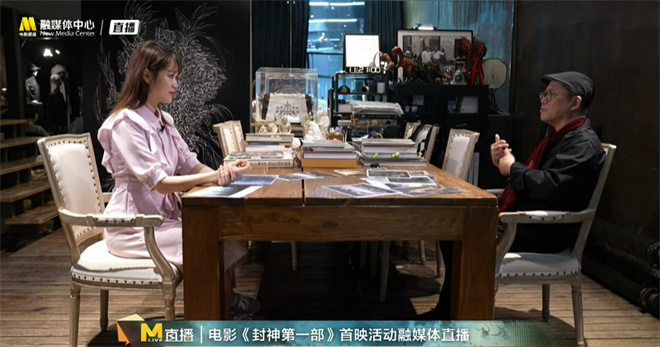 Roman, the host of movie channel, talks about Ye Jintian.
Roman, the host of movie channel, talks about Ye Jintian.
 Movie channel host Kanazawa
Movie channel host Kanazawa
National fantasy, ingenuity. Directed by and based on China’s classic novel The Romance of the Gods and the story book The Story of the King of Wu, the film Part I gathers the top filmmakers of Chinese movies and the leading technology in the industry. With the opening work of the trilogy of the Gods and the appearance of China’s first national myth epic film, it will officially land in the national cinema on July 20th.
Ten years and a quarter, feelings are surging. On the red carpet of the premiere, not only the core creator of "Feng Shen I" came dressed up, but also the participants of the trilogy series who had not appeared in the first part appeared together, and the singer who had not appeared for a long time also appeared as the singer of the ending song. At the premiere ceremony, Wu Ershan met with the media and audience with the whole cast of "Feng Shen I", and at the same time, he talked about the test of special effects makeup for an average of four and a half hours a day, "confessing" idols, restoring the expression pack of "God Blessing" and recreating the dance in "New da ji".
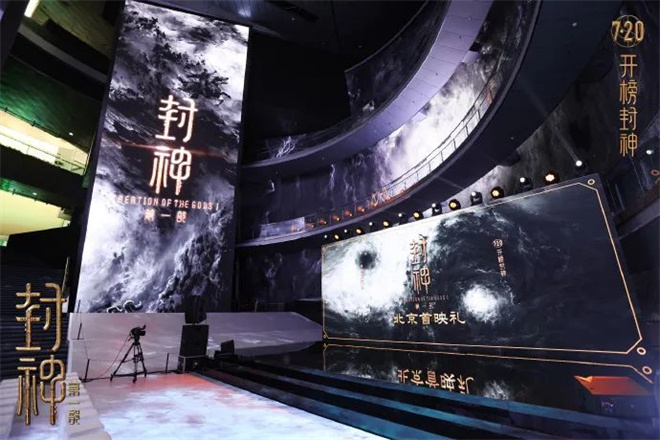
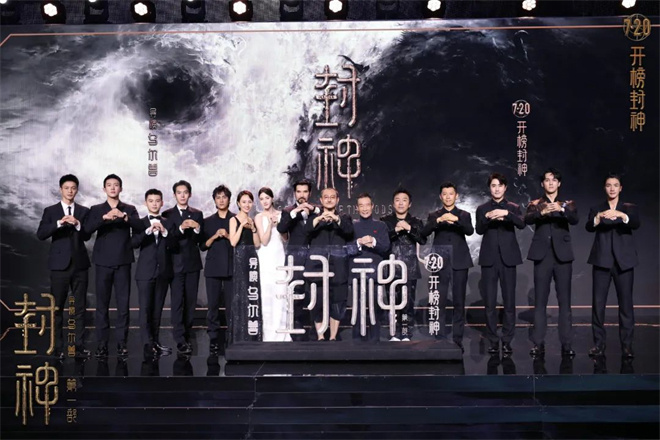
As a guest in Lanyu Living Room, director Wu Ershan frankly said that the trilogy of Feng Shen, including Feng Shen Part I, was his longest-running and most important film so far, and "tears filled his eyes at the moment when he got the dragon logo". Wu Ershan, who talked about the co-actors, is full of appreciation and gratitude to the specially invited "drama bones" ChristianRandPhillips, Bo Huang, Yolanda, etc., and to the carefully trained "proton group" young actors. I hope that the audience who bought tickets at that time will be "worth the fare".
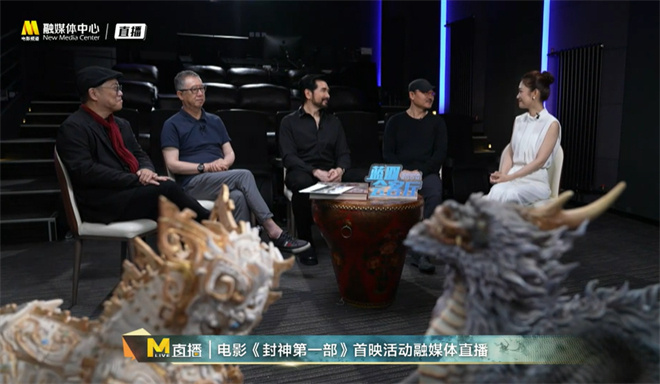
 Lan Yu living room: Wu Ershan praised ChristianRandPhillips and other masters.
Lan Yu living room: Wu Ershan praised ChristianRandPhillips and other masters.
ChristianRandPhillips, the starring actor who was praised by the director, frankly thanked the screenwriter for writing this "charming villain" so well. When he saw this multi-level role in the script, he felt compelled to play it. After being confirmed by the director’s invitation, he was even more excited that "all his mobile phones fell to the ground". As charming as he was in those days, he revealed that he worked out with young actors every day in order to restore the figure of the role military commander. This reinterpretation also needs to overthrow all previous impressions of Zhou Wang, hoping to bring strangeness to the audience.
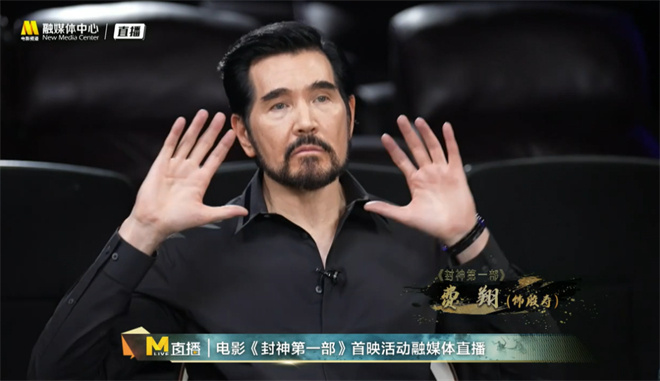 ChristianRandPhillips
ChristianRandPhillips
Even though the joy of the scene "spits out" Ye Jintian’s designs of armor and enthronement clothes are too heavy, ChristianRandPhillips still sincerely expresses that once he wears these clothes with real feelings, he can immerse himself in the role and present a better performance effect.
Exquisite and fitting costume design endows "Feng Shen I" with a wonderful texture that takes both fantasy and reality into consideration. In a live interview with the movie channel, production designer and Ye Jintian, the film’s styling director, said that the clothes used in the film did not pursue the true tribal style of Shang Dynasty, but more restored the temperament of the gods depicted in the novel "The Romance of the Gods", which combined the aesthetic characteristics of many dynasties and covered the excellent traditional art form of China.
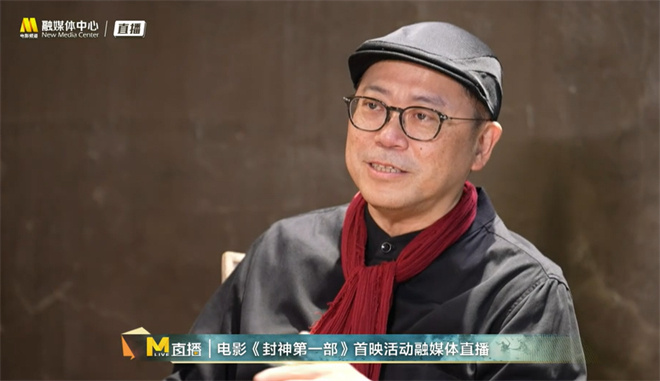 Timmy Yip
Timmy Yip
While enjoying the costume props exhibition of "Feng Shen I" in china national film museum, Ye Jintian, who carefully interpreted the costume characteristics of the main characters such as Yin Shou, Jiang Queen and da ji, went on to point out that the design of costume ornaments and scene props is based on the human world and has realistic scientific basis, which is not a completely mythical realm. Taking Lei Zhenzi’s 1:1 large-head conceptual design sculpture on display as an example, he said that the dynamics should start from the form first, and should be sampled from the reality in combination with the identity of the role, which should not only show the emptiness of myth, but also have a real feeling that can convince the audience.
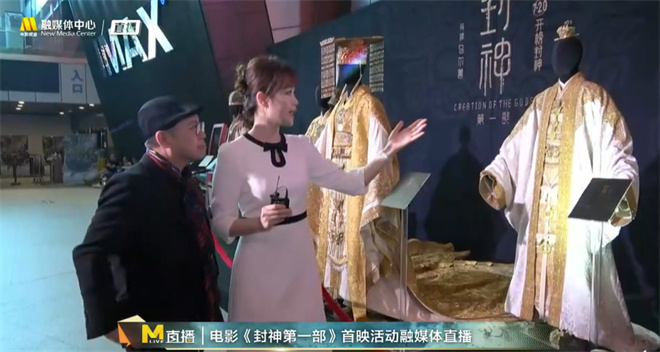
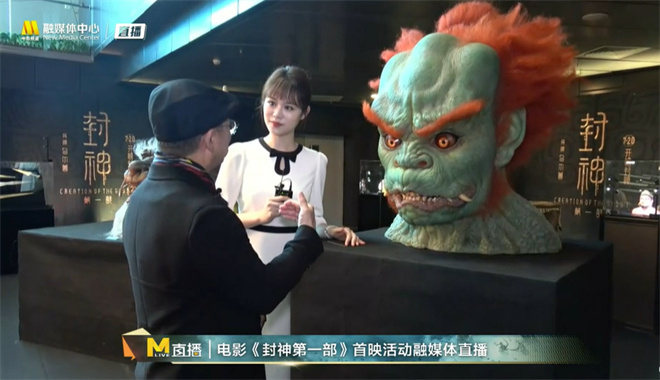 Ye Jintian’s Random Talk on Fashion and Design Concept
Ye Jintian’s Random Talk on Fashion and Design Concept
Changyou weapons and props exhibition hall, film critic Zhou Liming respectively interpreted Yang Jian’s three-pointed double-edged knife, the backing of "Proton Brigade" and other popular exhibitions. Combining with the props dagger in Bigan’s Gouxin Bridge, Zhou Liming analyzed its adaptation to the role’s identity and the irony extended from it, and affirmed the cultural image significance given to the props by the art team. In his view, the blessing of funds and technology makes it possible to visualize the legendary scenes, and the story of "sealing the gods" belonging to China can also be compared with the best movie IP in the world, such as Lord of the Rings and Marvel superheroes.
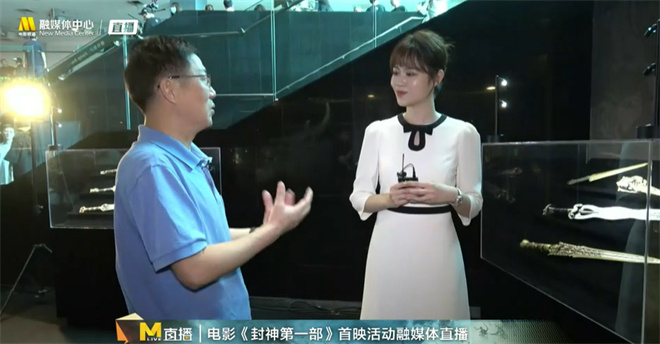 Zhou Liming’s Understanding of the Meaning Behind Weapon Props
Zhou Liming’s Understanding of the Meaning Behind Weapon Props
Huang Xiaowei, the curator of china national film museum, was deeply touched by the fact that he finally "returned" in the name of film by learning from the beautiful clothes and ornaments collected in many museums across the country. In her view, the props presented in the film, such as divining tortoise shells, can make the audience appreciate the original source and charm of the word "culture". Such exhibitions and exhibitions can make the audience understand the story behind the film more intuitively, and fully feel the achievements of China’s film art and technology, as well as the unique pursuit of China filmmakers.
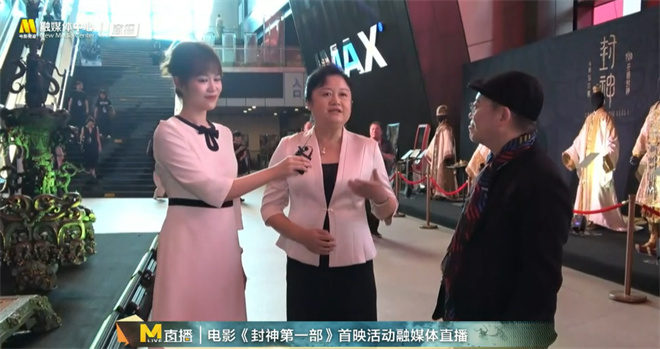 Huang Xiaowei spoke highly of this exhibition.
Huang Xiaowei spoke highly of this exhibition.
At the premiere scene that opened one after another on the same day, "Fengshen Part I" not only received positive comments from the college students of the M viewing group, but also was warmly praised by the guests in the IMAX special movie theater, such as,,,, and, with a good reputation. In addition, more experts and scholars from different cultural fields also expressed their professional opinions through live broadcast after watching the movie.
 M group photo after the screening
M group photo after the screening
Shi Aidong, a researcher at the Institute of Literature of China Academy of Social Sciences and a professor at the University of China Academy of Social Sciences, was a guest in the live broadcast room of the movie channel, pointing out the educational value of "Feng Shen I" to the contemporary era in terms of the view of good and evil and the view of right and wrong. From the perspective of storytelling that he has studied specially, he thinks that when facing the difficult problem of trilogy segmentation, the master has grasped the unchangeable structure such as the main line of connection and transformation, and the nodes of character relationship, and has also developed a gorgeous and reasonable imagination for the changeable part, which makes the idea ten years ago finally implemented as a trilogy epic, which is quite rare. Li Tianfei, a writer who is also a guest studio, also praised the adaptation of the film to the Romance of the Gods, pointing out that the drama that circumvents the chapter-to-chapter storytelling branch foreshadows the main thread and makes this well-known fairy tale film further.
 Shi Aidong and Li Tianfei are guests in the live broadcast room of the movie channel.
Shi Aidong and Li Tianfei are guests in the live broadcast room of the movie channel.
Ma Weidou, the founder of Guanfu Museum and a cultural scholar, and Fan Deng, a media person and doctor of film studies, sat around the table with Huang Xiaowei, Zhou Liming, Wu Ershan, Ran Ping, Ye Jintian and other film creators. Combined with the survey results of the ordinary audience on the story of "Goddess-worshipping" and the background of the film, they conducted interesting discussions on the multiple cultural dimensions such as the origin of myth, historical background, story name and scene, idiom extension, character characteristics, etc., and commented on the promoting significance of this giant system to the innovative presentation of Chinese traditional culture and the development of China film industry through talking and laughing.
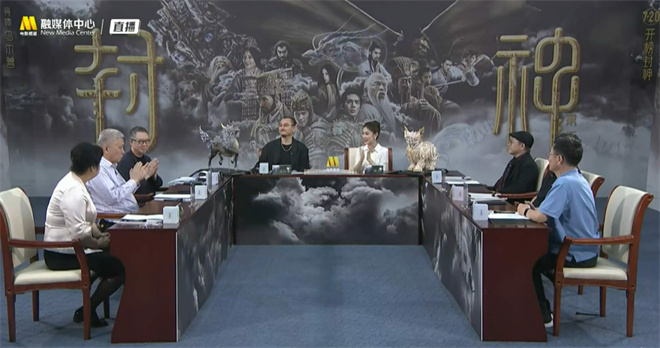 On-the-spot seminar of "Feng Shen I"
On-the-spot seminar of "Feng Shen I"
Panoramic presentation, full-line scanning, comprehensive interpretation and full-time communication. Integrating the power of the media, the movie channel broadcast the premiere of the movie "Fengshen Part I" in depth, and delivered the first word of mouth to the audience of the whole network for the first time, relying on powerful experts and media resources to effectively warm up the film release. Let’s start a myth, build a dream and worship the gods. On July 20th, please go into the cinema and enjoy the film "Worship the Gods Part I" with both image charm and cultural power.

 Respondents’ cognition of canned food
Respondents’ cognition of canned food Respondents’ purchase of canned food
Respondents’ purchase of canned food